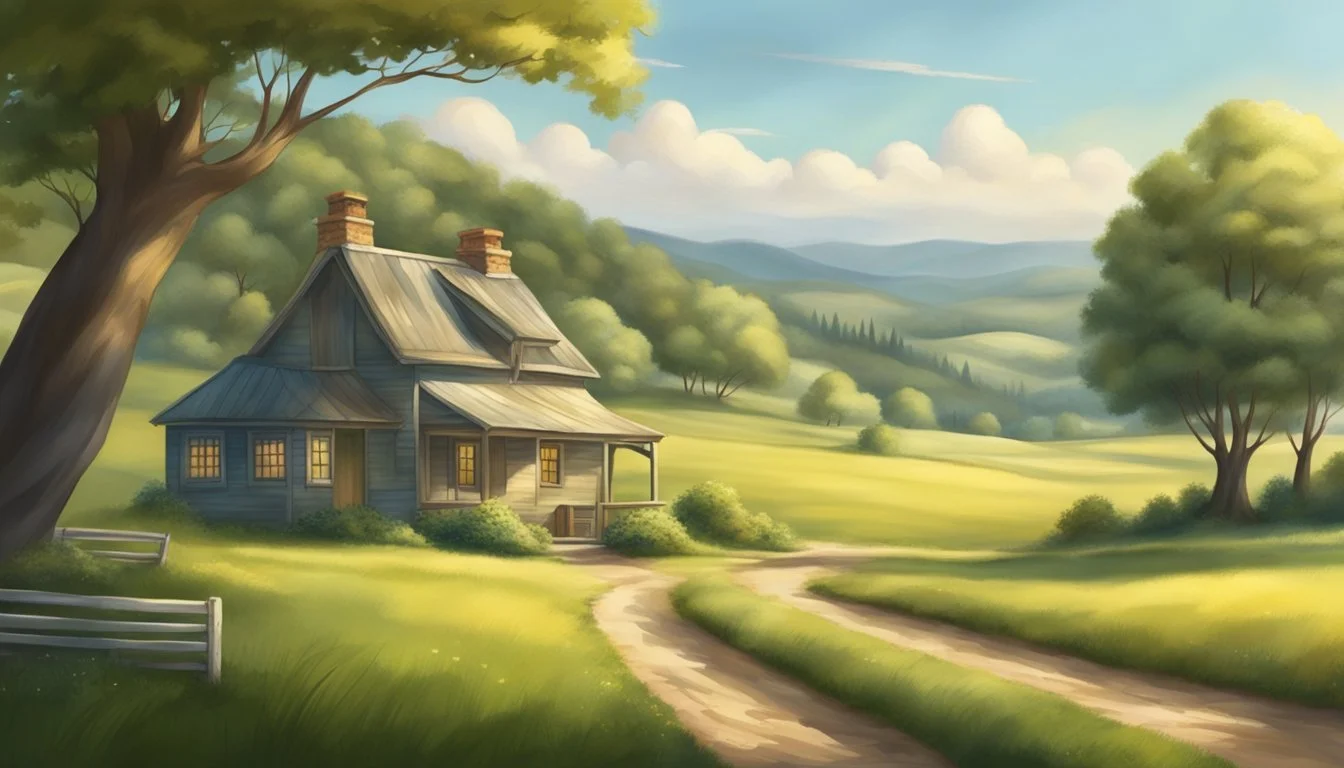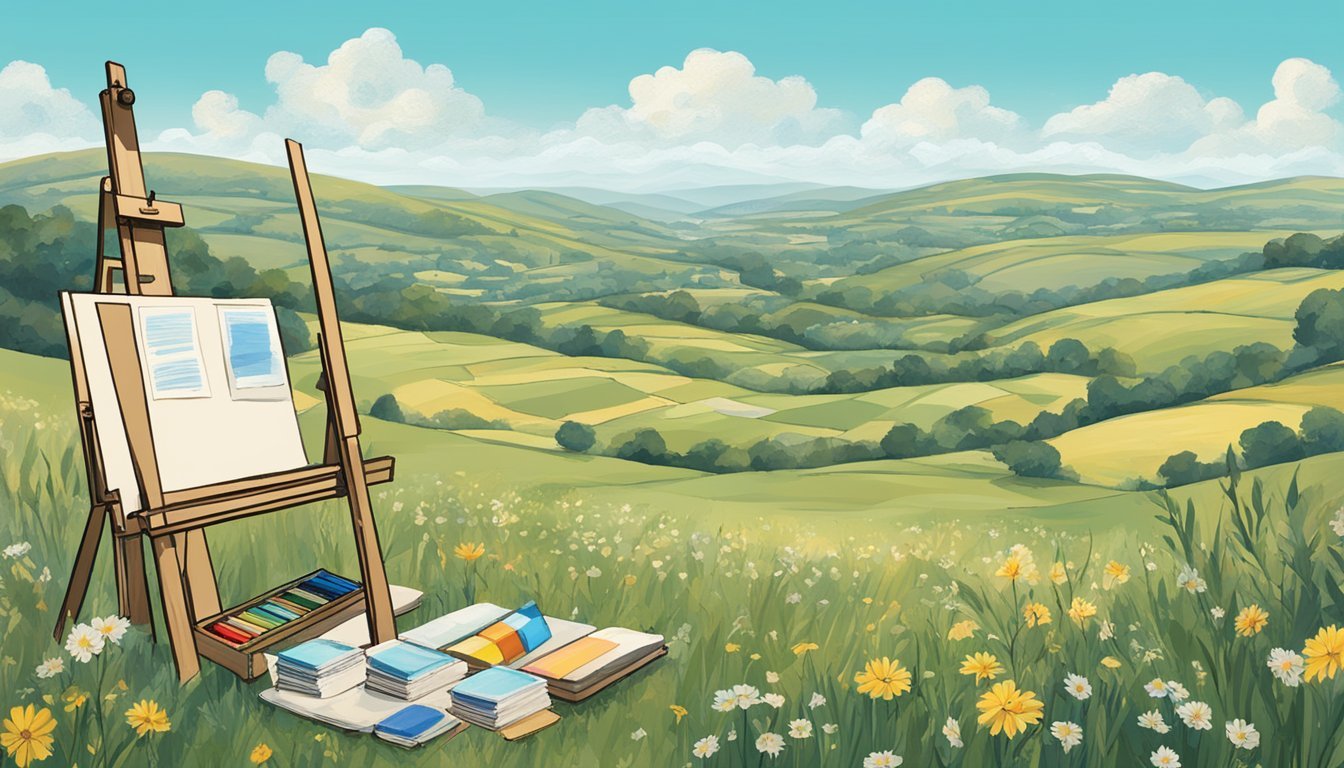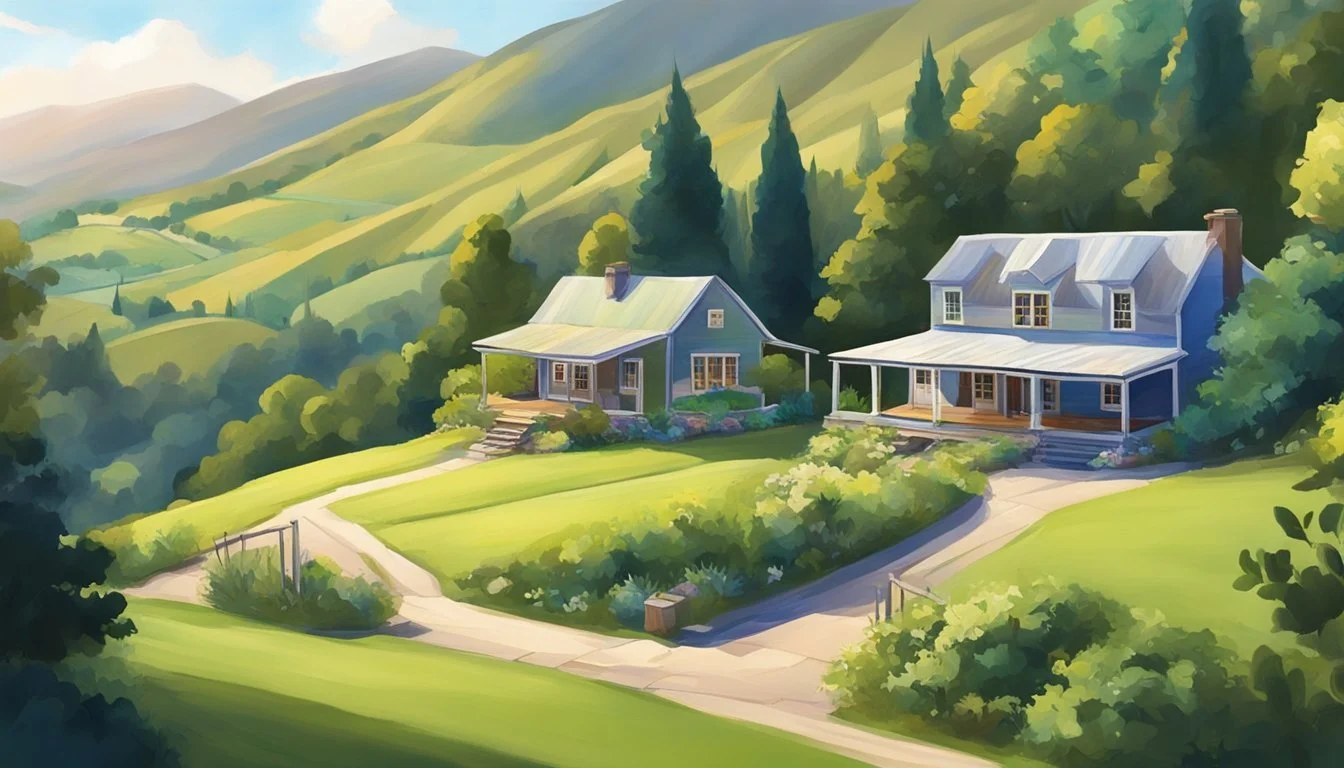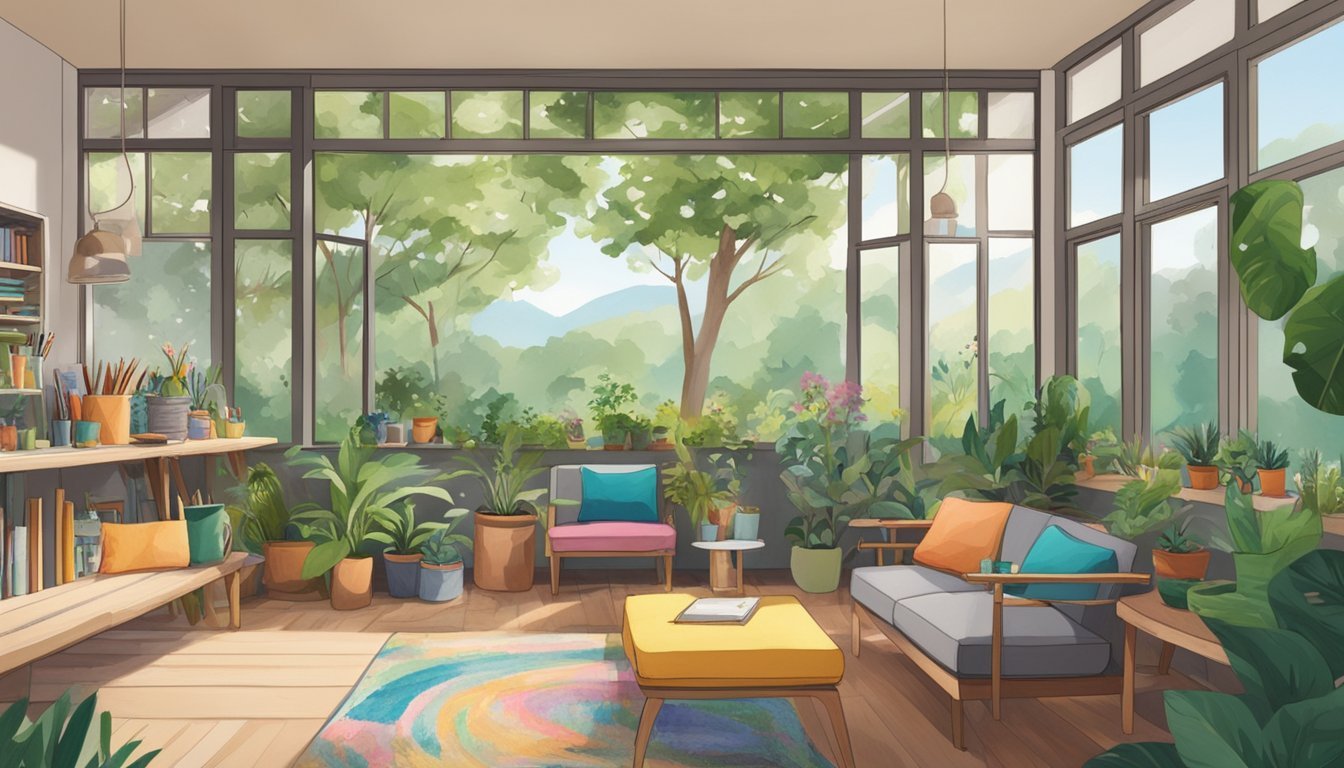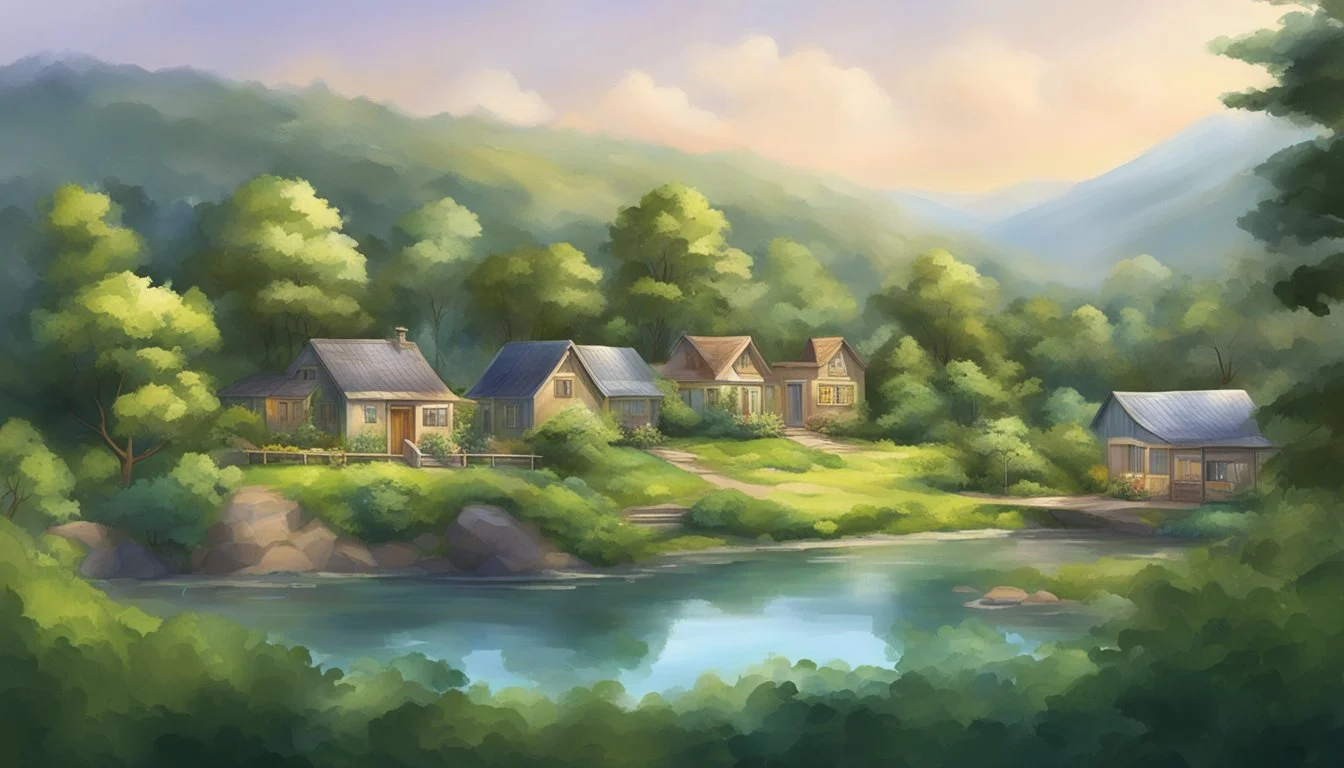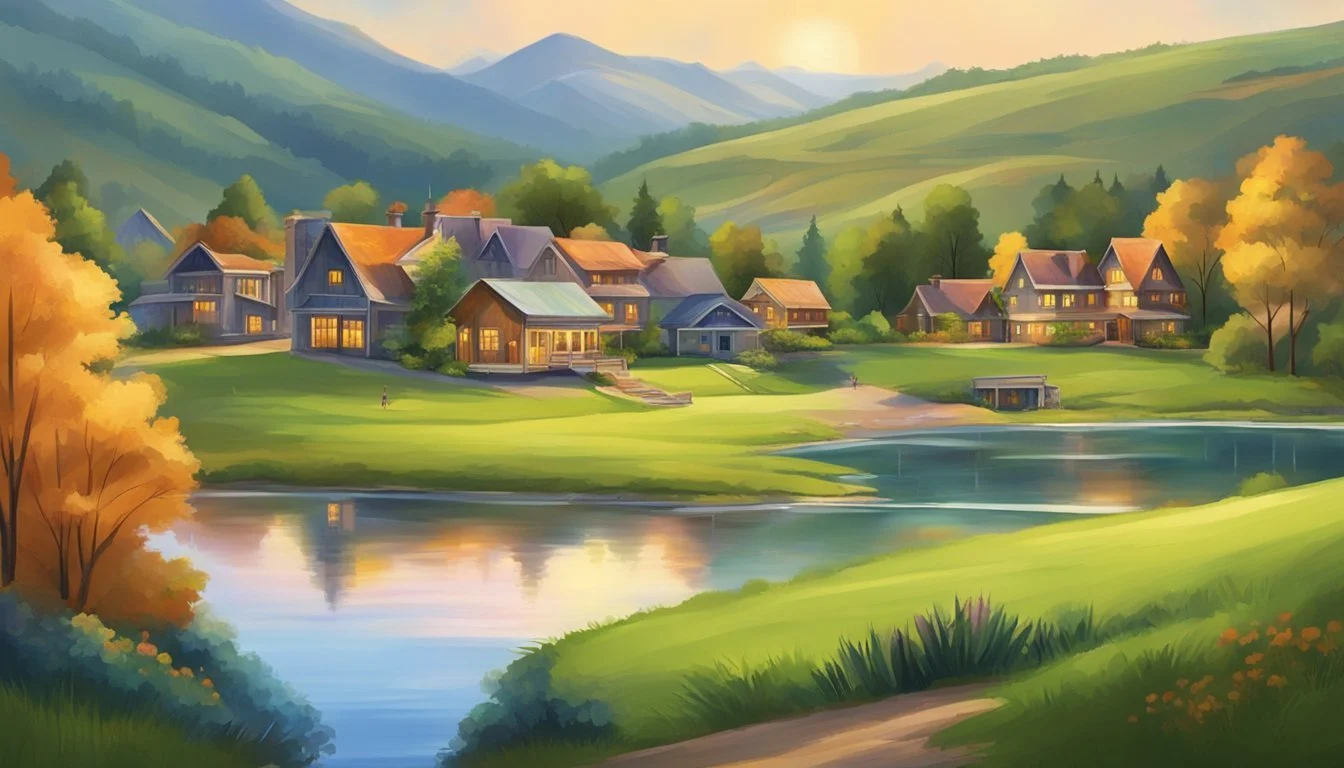Free Land for Artists
Discover Creative Spaces and Residencies
Access to free land and creative spaces can be a game-changer for artists seeking both inspiration and financial relief. Whether it's a short-term residency or a long-term program, these opportunities offer invaluable support for creative pursuits.
Programs like the Swatch Art Peace Hotel in Shanghai and the Kirkland Art Center in Clinton, NY, provide studio space and accommodations at no cost, allowing artists to focus solely on their work. These residencies often come with additional perks such as stipends and collaborative environments, fostering both personal growth and community engagement.
Such initiatives highlight how nurturing environments enable artists to push the boundaries of their creativity without the burden of financial strain. Whether it's through funded residencies or grants, artists have access to spaces that can significantly impact their careers and creative outputs.
Understanding Artist Residencies
Artist residencies are spaces where artists can focus on their creative practice away from everyday distractions. These residencies can vary greatly in terms of support, location, and the types of artists they cater to.
Defining the Artist Residency
An artist residency is a program that provides artists with time, space, and resources to develop their work. These programs can last from a week to several months. Residencies might offer free accommodation, studio space, and sometimes a stipend. They cater to various disciplines, including visual arts, music, writing, dance, and filmmaking.
Many residencies also involve some form of cultural exchange or community engagement. This environment helps artists immerse themselves in their work while gaining new perspectives and experiences.
The Importance of Residencies for Creative Growth
Residencies play a crucial role in an artist's creative growth. By offering a break from daily responsibilities, residencies allow artists to focus entirely on their practice. The unique environment fosters experimentation and innovation.
Interaction with other professional artists, scholars, and practitioners is another significant benefit. This networking can lead to collaborations, new techniques, and expanded worldviews. Additionally, residencies often provide access to resources and facilities that artists might not have in their usual settings.
Ultimately, these programs not only support the production of new work but also contribute to the artists' professional and personal development.
Types of Artist Residencies
Artist residencies come in various formats, tailored to support different disciplines and objectives. Whether focusing on a specific field of art, a thematic project, or community engagement, these residencies provide unique opportunities for artists to develop their work.
Discipline-Specific Residencies
Discipline-specific residencies cater to artists working within particular fields such as painting, sculpture, film, music, dance, architecture, visual art, or writing. These programs often provide specialized facilities and resources, allowing artists to focus intensely on their craft.
For example, a music residency might offer access to recording studios, while a sculpture residency could supply extensive indoor and outdoor workspace for large-scale projects. By concentrating on one discipline, these residencies foster a deep dive into the specific medium, encouraging detailed exploration and skill enhancement.
Thematic Residencies
Thematic residencies are designed around a specific concept, project, or societal issue. Artists across all disciplines might be invited to create works addressing themes like environmental sustainability, social justice, or cultural heritage. The aim is to bring together a diverse group of creators to explore these themes through their unique perspectives.
Participants in thematic residencies benefit from a structured focus, which can spark innovative ideas and collaborations. These residencies might culminate in public exhibitions, performances, or publications, offering artists a platform to share their work with a wider audience.
Community-Oriented Residencies
Community-oriented residencies emphasize interaction with the local community. These programs often involve artists in interdisciplinary work, engaging with residents through workshops, public talks, and collaborative projects. The goal is to foster cultural exchange, education, and mutual understanding between artists and the community.
An example is an artist residency in a rural setting where the artist might work with schools to introduce children to different art forms. Film and visual art residencies might include screenings or collaborative mural projects. Community-oriented residencies aim to create lasting impact both on the artists and the community members they engage with.
Global Residency Opportunities
Artists seeking to immerse themselves in creative communities and gain international exposure can find numerous residency opportunities worldwide. These programs offer benefits such as financial support, studio space, and professional development, enabling artists to focus on their work without financial burdens.
Residencies in North America
North America provides various artist residencies that cater to different creative disciplines. The 1708 Pilot Artist Residency Program in Richmond, Virginia, offers visual artists a free one- to three-month stay, including a private live/work space, a $1,000 monthly stipend, and basic equipment. In Canada, the Banff Centre for Arts and Creativity in Alberta provides interdisciplinary residencies, fostering collaboration among artists, writers, and musicians. Mexico hosts Casa Wabi in Oaxaca, which emphasizes interaction with local communities and cultural exchange.
European Residency Programs
Europe boasts a rich array of residencies in cities known for their vibrant arts scenes. Germany’s Künstlerhaus Bethanien in Berlin provides artists with studio space, a stipend, and networking opportunities within the city’s dynamic arts community. The Dora Maar House in Ménerbes, France, offers residencies in a historic 19th-century townhouse, providing a serene environment for artistic exploration. London’s Acme Studios offers live/work spaces and support for emerging artists, focusing on affordable housing and studio solutions.
Exploring Residencies in Asia
Asia hosts several notable residencies that promote cultural exchange and artistic growth. Japan’s Tokyo Arts and Space (TOKAS) offers international artists opportunities for collaboration and exhibition within a metropolitan setting. The M+ / Design Trust Research Fellowship in Hong Kong focuses on research and creative practice, integrating artists into the local culture and design landscape. In Indonesia, the Cemeti Institute in Yogyakarta emphasizes community engagement, with residencies that focus on social and cultural contexts.
Residency Scene in Australia and Africa
In Australia, the Australia Council for the Arts funds residencies that support artists’ development and international collaboration. Programs like Bundanon Trust in New South Wales provide immersive environments where artists can connect with nature and local communities. Africa offers unique opportunities such as the Thami Mnyele Foundation in Amsterdam, which, although located in the Netherlands, specifically supports African artists by providing a three-month studio residency for diverse artistic practices.
These residency programs facilitate the growth of artists by offering spaces and resources to enhance their creative journeys, promoting international dialogue and cultural exchange.
Selection and Application Process
Applying for artist residencies often requires careful preparation and an understanding of the selection criteria. The following sections cover the key aspects applicants need to address, from criteria to tips and preparing necessary documentation.
Criteria for Selection
Residency programs assess applicants based on a variety of factors. Artistic merit is paramount, with emphasis placed on the quality and originality of work.
Professional development plays a significant role, as programs seek artists who can benefit from and contribute to the residency environment. Residency providers often favor emerging artists and mid-career creators who demonstrate significant potential.
Project proposals are essential. They should clearly outline the intended work to be created during the residency, aligning with the residency's mission and facilities. Additionally, commitment to community and cultural engagement is often evaluated.
Application Tips and Deadlines
Successful applications require meticulous attention to detail. Carefully read the guidelines for each residency to ensure all specific requirements are met.
Submission deadlines are critical; missing them typically means missed opportunities. Some residencies have rolling deadlines, while others are fixed, such as the Pine Meadow Ranch Center for Arts & Agriculture whose deadline is June 2, 2024.
Compelling applications are personalized to each residency, demonstrating understanding of what each program offers. Letters of recommendation and personal statements should highlight relevant experiences and what applicants hope to achieve at the residency.
Preparing Your Portfolio and Residency Project Proposal
The portfolio is a crucial part of the application. It should include high-quality images of the applicant's most significant works, ensuring that each piece is well-documented and clearly presented.
Residency project proposals should be clear, concise, and compelling. They need to provide a detailed plan of the artistic work to be undertaken. The proposal should also highlight how the residency’s resources, such as studio space or equipment, will be utilized.
Finally, including a professional résumé can offer a comprehensive view of the artist’s career, including education, exhibitions, and past residencies, providing additional context to the selection committee.
Benefits of Artist Residencies
Artist residencies offer invaluable opportunities by providing enhanced creative environments, chances for networking and collaboration, and access to funding, stipends, and various resources that can propel an artist’s career forward.
Enhanced Creative Environment
Residencies often provide artists with a dedicated studio space, allowing them to work uninterrupted and focus solely on their craft. The setting is typically designed to inspire and challenge, free from the distractions of daily life.
Institutions like the Villa Lena in Tuscany create immersive retreats, welcoming a mix of musicians, visual artists, and writers. They offer a blend of tranquility and stimulation, essential for artistic growth. This environment fosters the confluence of experimentation and innovation, pivotal for artistic development.
Networking and Collaboration Opportunities
Residency programs bring together a diverse group of artists, curators, and other professionals from various disciplines. This mix of creative minds can lead to valuable collaborations and partnerships that significantly enhance an artist's work.
These programs often include scheduled events, such as workshops and exhibitions, where artists can showcase their work to peers and a broader audience. By interacting with others in the same field, artists can gain different perspectives, constructive feedback, and possible future opportunities through these networks.
Funding, Stipends, and Resources
Many residencies offer financial support in the form of stipends, which can cover living expenses, materials, and travel costs. This funding enables artists to focus on their work without financial stress.
Residency programs vary greatly: some are fully funded, while others may require a fee. Regardless, they often provide access to high-quality materials, equipment, and educational resources that might otherwise be unaffordable or inaccessible. This support can be pivotal in taking an artist’s work to new heights, offering both immediate benefits and long-term career advantages.
The Impact of Residencies on Local Communities
Artist residencies have far-reaching effects on local communities. They play crucial roles in both economic growth and cultural development and help foster a diverse cultural landscape by supporting local artists and introducing new creative influences.
Cultural and Economic Influence
Residencies significantly contribute to the local economy through increased tourism and job creation. Visitors attracted to artist displays and events spend money in the community, enhancing the economic base. Moreover, many residencies facilitate professional development programs for local artists, amplifying their ability to succeed financially and professionally.
Examples include workshops, exhibitions, and community art initiatives, which not only support artists but also provide a venue for community members to engage with modern art. This engagement helps embed a strong cultural foundation within the community fabric, laying the groundwork for continued economic and cultural enrichment.
Promoting Artistic and Cultural Diversity
Residencies help to promote artistic and cultural diversity by bringing together creators from varied backgrounds. This melting pot of ideas and perspectives fosters enriched cultural experiences for local residents. For example, programs often host multidisciplinary artists, enriching the local cultural tapestry through diverse forms of expression, such as visual art, music, dance, and writing.
Additionally, by providing spaces for local artists, communities can support cultural diversity within their ranks. Many residencies offer specific opportunities, such as Associate Residencies, to local creatives, enabling them to interact and collaborate with international artists. This interaction not only nurtures talent but also enhances the residents' appreciation for a broad spectrum of cultural expressions.
Showcasing Outcomes and Achievements
Highlighting the outcomes and achievements of artist residencies is crucial for both the artist’s career and the program’s reputation. It involves presenting final exhibitions, fostering mentorship and artistic development, and meticulously documenting the residency experience.
Exhibitions and Final Presentations
Many residencies culminate in a final exhibition where artists present their work. These exhibitions can be held in galleries associated with the residency or in local venues. This provides artists an opportunity to showcase their work to the public, collectors, and art critics.
Final presentations are often an official part of the residency program, offering a platform to debut completed projects. For the artists, this is not just a showcase but a significant professional milestone that can enhance their visibility and credibility in the art world.
Mentorship and Artistic Development
Mentorship is a vital component of many artist residencies. Experienced artists, curators, and industry professionals often provide guidance and feedback. This mentorship can lead to considerable artistic development, helping artists refine their techniques, broaden their conceptual frameworks, and navigate the professional art landscape.
Artistic development is further supported through workshops, critiques, and collaborative projects. These experiences help foster growth, confidence, and innovation, contributing to the artist’s long-term professional journey.
Documenting Your Residency Experience
Thorough documentation of the residency experience is essential for capturing the creative process and the progress made. This can include maintaining a blog, creating a photo journal, or producing video diaries. Such documentation serves as a personal archive and a communicative tool to share the residency journey with a broader audience.
Artists often use this documentation to apply for future opportunities, showcase their dedication to their practice, and reflect on their growth. Proper documentation can also be a resource for future exhibitions and presentations, underscoring the importance of the residency in their artistic trajectory.
Navigating Challenges and Preservation
As the demand for creative spaces increases, artists face rising rents and limited availability of affordable studio spaces. Meanwhile, both the present challenges and future trends in residencies offer insight into potential solutions for these obstacles.
Dealing with Rising Costs and Space Limitations
Rising rents in urban areas often push artists out of city centers, making it difficult to find affordable studio spaces. Many artists turn to residencies as a solution. Organizations can help by offering fully-funded residencies, providing accommodations, and stipends, as seen with programs like the one in Clinton, NY.
Space limitations also pose a challenge. Larger cities with density issues need innovative solutions to accommodate more artists. Partnerships between cities and residency programs help secure spaces for creative projects and community engagement. Efforts in conservation and repurposing unused buildings can create new opportunities, preserving cultural and historical sites while offering artists the space they need.
The Future of Residencies: Trends and Innovations
Looking ahead, trends indicate a shift toward more collaborative and community-focused residencies. Programs are now designed to foster interaction between artists and local communities, benefiting both parties. The Swatch Art Peace Hotel in Shanghai demonstrates a model where art, cultural exchange, and commerce intersect, offering residencies that allow artists to live and work in vibrant environments.
Innovations in technology also shape the future of residencies. Digital platforms facilitate virtual residencies, breaking geographic barriers. These platforms provide artists from various backgrounds and locations access to resources and networks previously unreachable. Moreover, as sustainability becomes paramount, residencies integrate eco-friendly practices, ensuring long-term viability for artists and communities alike.
Notable Residency Examples
Several key artist residencies around the world offer unique opportunities for creatives to develop their craft in supportive and inspiring environments. These residencies often provide studio spaces, stipends, and various institutional resources.
Case Studies of Renowned Residencies
Swatch Art Peace Hotel, Shanghai: Located in a historic building, the Swatch Art Peace Hotel hosts international artists for three to six months. Residents receive free accommodation and studio space, fostering a collaborative environment. This residency aims to promote cultural exchange and allow artists to focus on their work without financial strain.
Fondation Fiminco, Paris: Situated on the outskirts of Paris, Fondation Fiminco transformed a former industrial site into a hub for creativity. Artists benefit from expansive studio spaces, exhibition venues, and a variety of workshops. The facility includes seven art galleries and partnerships with established schools, providing a rich, multi-disciplinary environment.
Villa Lena, Tuscany: Villa Lena integrates artists, musicians, and writers into a serene setting in Tuscany. It offers accommodations and studio spaces for residencies lasting from two weeks to two months. By blending art, nature, and Italian culture, Villa Lena provides a significant retreat for creative professionals.
Dora Maar House, Provence: This residency, located in the picturesque region of Provence, supports writers, visual artists, and performers. Residents have access to studios and are encouraged to engage with the local community. Funded by the Museum of Fine Arts, Houston, the program offers a blend of isolation and cultural immersion.
Taliesin Artist Residency Program, Scottsdale: Based at Frank Lloyd Wright's historic Taliesin West, this program supports emerging and established artists. It provides studio spaces and interaction with scholars in architecture, design, and the visual arts. The unique architectural environment enhances creative exploration and interdisciplinary dialogue.

